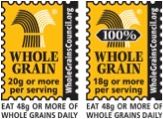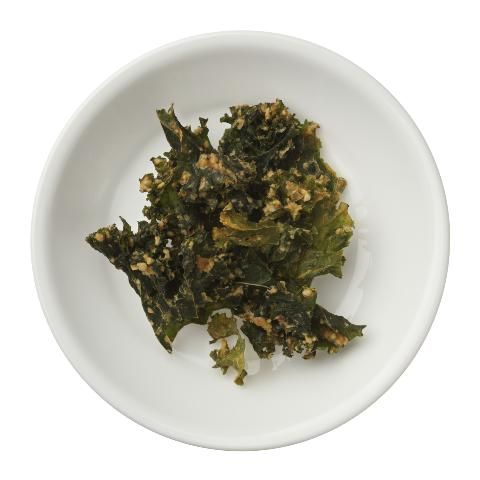Imagine it is the middle of the afternoon and you are feeling hungry. You ate lunch, but now you are looking for something to hold you over until dinner. Sound familiar? What you may be looking for is a snack, which is defined as a small amount of food eaten between meals ("Snack" n.d.). Because snacks are consumed in addition to meals, it is important to shop for ones that increase your nutrient intake without adding too many extra calories. This can be tricky since there are so many snack foods from which to choose. Foods selected for snacks range from nuts and crackers to apples and carrots. Read on to learn about the benefits of healthy snacks and to learn healthy snack shopping tips.
Snacking Benefits
At first glance, you might think that snacking should be avoided because of the extra calories it can add to your diet. However, studies have shown there may be benefits when healthy snack choices are made (Zizza and Beibei 2012; Nicklas, O'Neil, and Fulgoni 2014; Hull et al. 2014; Ortinau et al. 2013).
Improved Diet Quality
Snacking may improve the quality of your diet by increasing your intake of vitamins and minerals (Zizza and Beibei 2012). Snacking has been linked with higher intakes of potassium, calcium, vitamin A, and magnesium (Nicklas, O'Neil, and Fulgoni 2014). Including snacks such as almonds has been shown to increase diet quality in both parents and children (Burns et al. 2016). Dietary fiber intake also has been shown to increase with snacking (Nicklas, O'Neil, and Fulgoni 2014). Dietary fiber is important to include in our diets because it can help us reduce blood cholesterol, maintain healthy bowel function (Institute of Medicine 2005), and lower the risk of chronic diseases (Dahl & Stewart, 2015). The easiest way to ensure that snacks help to improve the quality of your diet is to select fruits, vegetables, nuts, whole grains, low-fat or fat-free dairy, and lean protein foods instead of cookies, cakes, candy, and salted snack foods such as chips.
Appetite Control: Do snacks help?
Most snacks require little, if any, time to prepare. This is one of the things that make them so convenient when you feel the need for a small pick-me-up between meals. But do snacks help keep your hunger in check before your next meal? This may be the case when consuming protein foods (Hull et al. 2014; Ortinau et al. 2013) or foods containing dietary fiber (Institute of Medicine 2005). Foods such as almonds and yogurt have been shown to help with appetite control, leaving you feeling satisfied longer (Hull et al. 2014; Ortinau et al. 2013). It is possible that this feeling of satiety may influence people to eat less at mealtime, thereby not having a significant effect on weight or body mass index (BMI) (Nicklas, O'Neil, and Fulgoni 2014; Hampl, Heaton, and Taylor 2003). Beverages have little or no effect on satiety; thus sugar-containing beverages are best replaced with water or some other lower-calorie choice.
Shopping for Delicious (and Nutritious) Snacks
Shopping for snacks may seem overwhelming because there are so many choices! Follow these tips to make your next shopping trip easier (USDA 2013):
- Make it convenient!
Buying pre-cut fruits and vegetables can save you time when packing your next lunch or looking for a quick and easy snack! When time allows, slicing and storing fruits and vegetables yourself may help you save money, too, and your favorite raw snacks will be ready when you want them. Snacking on pre-cut vegetables such as baby carrots is a great way to get plenty of nutrients and dietary fiber in your diet. Pair them with your favorite dips, such as hummus or low-fat dressing.
2. Shake things up
Make your own trail mix by combining your favorite unsalted nuts and dried fruits in a container with a lid. Give the container a few good shakes and then pack your trail mix into individual snack-size bags. Mix up your snacks even more by adding fruits such as blueberries, strawberries, or canned pineapple to plain low-fat or fat-free yogurt. See the recipes below for more ideas.
3. Choose whole grains
Look for snacks such as popcorn and granola bars that have a "Whole Grain Stamp" approved by the Whole Grains Council (Figure 1). These foods often are higher in fiber, which may keep you feeling full until your next meal. For more information on whole grains see Shopping for Health: Whole Grains (https://edis.ifas.ufl.edu/fs161).

Credit: Whole Grains Council
4. Look for protein
Protein snacks are another great way to keep your appetite in check until your next meal. Foods such as hard-boiled eggs, unsalted nuts, and low-sodium deli meats are great options. Wrap sliced low-sodium turkey breast around low-fat mozzarella for a tasty, nutritious snack.
5. Avoid portion distortion
Remember, snacks are small amounts of food, and for this reason, they need to be much smaller and provide fewer calories than a meal. Practice listening to your hunger cues by "checking in" with your body to see if you are hungry. To help control portions and reduce overeating from mindless snacking, store foods in snack-size containers, bags, or tins. Check out ChooseMyPlate.gov to learn more about portion sizes for different snack foods.
6. Get fruity!
Apples and bananas are great snack options because they are ready to eat. Other grab-and-go options include individual cups of canned peaches, pears, or other fruits packed in water or natural juice, as well as dried fruits such as raisins, apricots, or cranberries.
7. Watch for sugar overload
Limit snacks with added sugars such as cookies, candies, and soda between meals. These foods usually do not add to the nutritional quality of your diet, and they may not keep you feeling satisfied for long. Swap these sugar- and often fat-laden foods with some of the ideas mentioned above. If you are looking for a refreshing alternative to soda, try adding sliced lemon, cucumber, or mint to your glass of water for added flavor and hydration.
8. Get creative with substitutions
Use healthier substitutions in your next homemade treat. Unsweetened applesauce works great as a substitute for oil in muffin and bread recipes. Check out Superb Substitutions on the UF/IFAS blog (http://blogs.ifas.ufl.edu/familyalbum/2014/07/10/superb-substitutions-make-your-cake-and-eat-it-too/) for other great substitutions.
Homemade Crispy Kale Chips

Credit: iStock/Thinkstock.com
Makes 4–6 servings.
Ingredients
- 1 bunch of kale, washed
- 1 tbsp extra virgin olive oil
- 1 tsp salt
- 1 tsp black pepper
Directions
- Preheat oven to 350 degrees Fahrenheit.
- Separate the kale by removing the leaves from the thick stems. Evenly place the leaves on a baking sheet.
- Drizzle kale with olive oil.
- Sprinkle salt and black pepper on top.
- Bake for 15–20 minutes or until the edges begin to brown.
Delicious Peanut Butter and Jelly Yogurt
Adapted from (http://www.skinnytaste.com/2012/08/pb-j-yogurt.html)
Makes 1 serving.
Ingredients
- ½ cup fat-free plain yogurt (or Greek yogurt)
- 1 tbsp natural peanut butter
- 2 tsp reduced-sugar grape jelly (or other favorite jelly flavor)
- 2 tbsp red seedless grapes, sliced in half
- 1 tsp unsalted peanuts
Directions
- Place yogurt in a bowl or to-go container.
- Add peanut butter and jelly on top.
- Sprinkle on grapes and peanuts.
- Stir and enjoy!
Snacks can be a great way to satisfy your hunger between meals and can provide an extra nutritional boost to your diet. Get creative and choose smarter, healthier snacks on your next shopping trip. Healthy Snacking!
References
Burns, A.M., Zitt, M.A., Rowe, C.C., Langkamp-Henken, B., Mai V., Nieves Jr, C., Ukhanova, M., Christman, M.C., Dahl, W.J. 2016. "Diet quality improves for parents and children when almonds are incorporated into their daily diet: a randomized, crossover study." Nutrition Research. 36:80-89.
Dahl, W. J. and L. Foster. 2010. Shopping for Health: Whole grains. FSHN10-13. Gainesville: University of Florida Institute of Food and Agricultural Sciences. Retrieved May 12, 2022 from https://edis.ifas.ufl.edu/publication/FS161
Dahl, W. J., & Stewart, M. L. (2015). "Position of the Academy of Nutrition and Dietetics: Health Implications of Dietary Fiber." J Acad Nutr Diet, 115(11), 1861–1870. doi:10.1016/j.jand.2015.09.003
Hampl, J. S., C. L. B. Heaton, and C. A. Taylor. 2003. "Snack Patterns Influence Energy and Nutrient Intakes but Not Body Mass Index." Journal of Human Nutrition and Dietetics 16:3–11.
Hull, S., R. Re, L. Chambers, A. Echaniz, and M. S. Wickham. 2014. "A Mid-Morning Snack of Almonds Generates Satiety and Appropriate Adjustment of Subsequent Food Intake in Healthy Women." European Journal of Nutrition. doi:10.1007/s00394-014-0759-z.
Institute of Medicine, Food and Nutrition Board. 2005. Dietary Reference Intakes for Energy, Carbohydrate, Fiber, Fat, Fatty Acids, Cholesterol, Protein, and Amino Acids (Macronutrients). Washington, DC: National Academy Press.
Nicklas, T. A., C. E. O'Neil, and V. L. Fulgoni III. 2014. "Snacking Patterns, Diet Quality, and Cardiovascular Risk Factors in Adults." BMC Public Health 14:388.
Ortinau, L. C., J. M. Culp, H. A. Hoertel, S. M. Douglas, and H. J. Leidy. 2013. "The Effects of Increased Dietary Protein Yogurt Snack in the Afternoon on Appetite Control and Eating Initiation in Healthy Women." Nutrition Journal 12:71.
Skinnytaste.com. 2012. "PB + J Yogurt." Retrieved May 12, 2022 from http://www.skinnytaste.com/2012/08/pb-j-yogurt.html
"Snack." n.d. Merriam-Webster Dictionary. Retrieved May 12, 2022 from http://www.merriam-webster.com/dictionary/snack
UF/IFAS. 2014. Superb Substitutions: Make Your Cake and Eat It Too. Retrieved May 12, 2022 from http://blogs.ifas.ufl.edu/familyalbum/2014/07/10/superb-substitutions-make-your-cake-and-eat-it-too/
USDA. 2013. "MyPlate Snack Tips for Parents." Retrieved May 12, 2022 from https://createbetterhealthutah.files.wordpress.com/2015/09/snack-tips-for-parents.png
Zizza, C. A. and X. Beibei. 2012. "Snacking is Associated with Overall Diet Quality." Journal of the Academy of Nutrition and Dietetics 112:291–296.